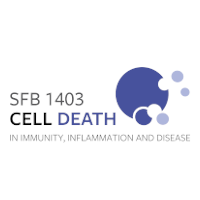A barley MLA immune receptor is activated by a fungal nonribosomal peptide effector for disease susceptibility.
Abstract
The barley Mla locus contains functionally diversified genes that encode intracellular nucleotide-binding leucine-rich repeat receptors (NLRs) and confer strain-specific immunity to biotrophic and hemibiotrophic fungal pathogens. In this study, we isolated a barley gene Scs6, which is an allelic variant of Mla genes but confers susceptibility to the isolate ND90Pr (BsND90Pr) of the necrotrophic fungus Bipolaris sorokiniana. We generated Scs6 transgenic barley lines and showed that Scs6 is sufficient to confer susceptibility to BsND90Pr in barley genotypes naturally lacking the receptor. The Scs6-encoded NLR (SCS6) is activated by a nonribosomal peptide (NRP) effector produced by BsND90Pr to induce cell death in barley and Nicotiana benthamiana. Domain swaps between MLAs and SCS6 reveal that the SCS6 leucine-rich repeat domain is a specificity determinant for receptor activation by the NRP effector. Scs6 is maintained in both wild and domesticated barley populations. Our phylogenetic analysis suggests that Scs6 is a Hordeum-specific innovation. We infer that SCS6 is a bona fide immune receptor that is likely directly activated by the nonribosomal peptide effector of BsND90Pr for disease susceptibility in barley. Our study provides a stepping stone for the future development of synthetic NLR receptors in crops that are less vulnerable to modification by necrotrophic pathogens.
Read more at New Phytol. 2024 Dec 6.
